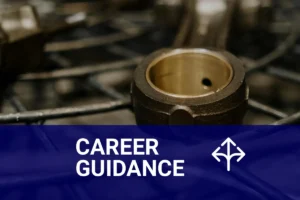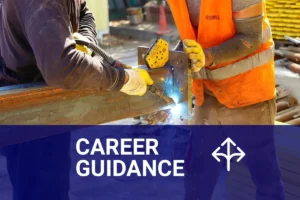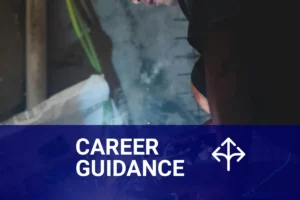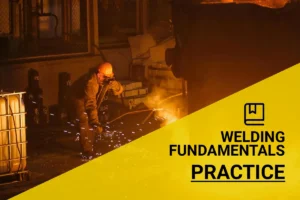How Much Education Does a Welder Need? What to Know About Welding Training
Published on: February 24, 2025 | Last modified: March 4, 2025
By: Joe Carter
Welding education refers to the training and coursework needed to become a skilled welder. It’s about learning techniques, safety, and tools used in welding.
It’s a question I’ve heard often: how much education does a welder need? This is crucial because proper education helps you master the skills required for job safety and efficiency. From my experience in the field, I’ve noticed that welders with strong educational backgrounds tend to get hired more quickly and earn higher wages.
In this guide, I’ll cover various aspects of how much education does a welder need, including types of welding education, prerequisites, steps to become a welder, safety tips, and factors affecting education requirements. I’ll also highlight unique issues in welding education, advantages, typical applications, and available options for achieving proficiency.
Contents
- How Much Education Does a Welder Need?
- What is Welding Education?
- Types Of Welding Education
- Prerequisites: What Do You Need?
- Steps to Become a Welder
- Safety Tips
- Types Of Education Options for Welders
- Factors Affecting Welding Education Requirements
- Unique Issues in Welding Education
- Why This is Worth It: Advantages Of Welding Education
- Typical Applications Of Welding Education
- Other Options for Achieving Welding Proficiency
- Frequently Asked Questions (FAQs)
- Conclusion
- Additional Reading
How Much Education Does a Welder Need?
Welding education includes training and skills needed to weld. So, how much education does a welder need? Most welders complete a high school diploma and 6 to 12 months of vocational training, depending on specialties, like MIG or TIG welding. It’s challenging but rewarding for construction and repair jobs.
What is Welding Education?
Welding education includes the skills and knowledge needed to join materials, usually metals. It covers both theoretical and practical components. You’ll learn about welding processes like MIG (Metal Inert Gas), TIG (Tungsten Inert Gas), and stick welding. According to the American Welding Society, over 500,000 welders work in the U.
S., and proper education increases their chances of getting hired.
So, how much education does a welder need? Most welders complete a high school diploma or equivalent. I went through a technical school program that lasted about 6 to 12 months. It prepared me well for real-world welding jobs by combining hands-on practice with classroom instruction.
I had a friend who needed help understanding welding safety while training to become a welder. They wanted to know what education is needed to enter the field. It’s essential to understand that, apart from traditional education, certifications can enhance your skills and job prospects. Classes may include safety protocols and advanced techniques—skills vital for any welder today.
Types Of Welding Education
What types of welding education are available?
-
Vocational Training Programs
These programs focus on hands-on training and fundamental theory. You typically need about 6 to 12 months of training. Start by finding a local vocational school and enrolling in a welding program. Proper safety measures are crucial in welding to avoid injuries like eye flash burns, and learning how to treat flash burn in eyes is essential.
-
Community College Courses
These courses offer a broader education, combining theory and practical skills. Expect to spend 1 to 2 years earning an associate degree. To enroll, check your nearby community college’s course listings for welding degrees.
-
Certification Programs
Certification programs prepare you for specific welding tasks and techniques, generally requiring 2 to 12 months. To achieve certification, find an accredited program that offers credentials from recognized bodies like the AWS (American Welding Society). Successfully completing such programs often involves mastering various positions, including vertical and horizontal welding, and for those looking to further enhance their expertise, learning specific techniques to weld overhead effectively is essential.
-
Apprenticeship Programs
These long-term training options pair you with skilled welders. An apprenticeship lasts 2 to 4 years, combining work and study. To start, search for unions or companies that offer apprenticeship programs in your area.
-
Online Welding Courses
Online courses provide flexibility but often lack hands-on practice. You can complete them in a few weeks to months. To begin, look for reputable online platforms that offer welding fundamentals and safety training.
We’ve wrapped up the different welding education options here. Let us turn our attention to the requirements needed for success.
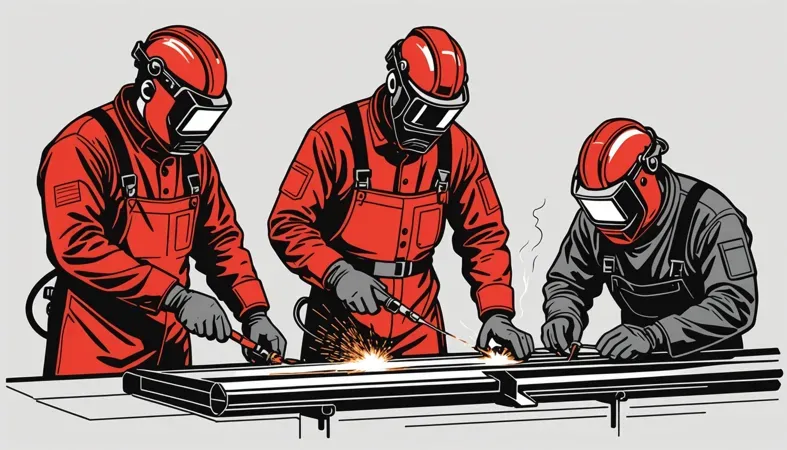
Prerequisites: What Do You Need?
What do you need before diving into a welder’s education?
- Welding Training Programs: Consider programs like Lincoln Tech or New Horizons. They provide essential skills and foundational knowledge.
- Earnings and Job Outlook Reports: Refer to the Bureau of Labor Statistics. It offers data on job prospects and salaries for welders in your area.
- Certification Courses: Explore the AWS SENSE program. Certification can boost your job prospects and credibility in welding.
- Online Resources: Use websites like WeldingWeb or YouTube tutorials. They offer tips and insights on various welding techniques and practices.
We’ve wrapped up the necessary prerequisites here. Let us turn our attention to the steps involved in becoming a welder.
Steps to Become a Welder
Here are the steps to understand the education needed to become a welder.
-
Research Educational Options
Start by exploring different educational paths. You have options like high school programs, community colleges, and trade schools. Many community colleges offer diploma programs lasting 6 months to 1 year, costing between $5,000 and $15,000. Weigh the pros and cons of each based on cost and time investment.
Some programs provide critical hands-on experience. This practical training, often around 300 hours, is more valuable than classroom learning alone. Look for institutions that offer both welding theory and operational practice simultaneously. The right mix makes a significant difference! Understanding the techniques like how to forge weld is essential for enhancing welding skills further.
-
Complete a Welding Program
Enroll in and complete a program that offers essential skills. Most welding programs cover techniques like MIG and TIG welding, taking around 1 to 2 years. According to the U.
S. Bureau of Labor Statistics, you’ll learn to weld various materials, directly impacting job opportunities.
Also, check if your program provides real-world training through apprenticeships. Many employers prefer welders with practical experience. I missed this step in my training and found it harder to land a job compared to classmates who gained that experience. It’s important to also consider the potential risks involved in the profession, such as exposure to ultraviolet rays, which might cause skin damage similar to getting sunburn from welding.
-
Obtain Certification
After training, get certified to enhance your job prospects. The American Welding Society (AWS) offers certifications that employers highly value. Preparing for certification may require an additional 8 to 12 weeks of study, costing between $200 and $800, depending on the testing method. Learning proper heliarc welding techniques can be an essential part of this certification process, making it a valuable skill in the welding sector. Understanding how to apply these techniques is crucial, and more detailed information can be found on mastering heliarc welding.
.
Be aware that certain states, like Texas and California, may have specific certification requirements for certain jobs. If you plan to work in a particular region, check local regulations before starting your educational path. I once overlooked state certifications and had to take extra classes later!
-
Consider Specialization
After certification, think about specialization options. Specialists often earn higher salaries; for instance, underwater welders can make over $60,000 annually. Areas like pipeline welding or structural welding may require additional training, lasting a few weeks to months. It’s essential to also consider safety practices, as performing tasks such as welding without a mask can be hazardous. To delve deeper into the risks, see what happens if you weld without a mask.
Specializing can also make you a sought-after candidate. By focusing on a niche, like welding aerospace components, you develop unique skills. Research what’s in demand in your area and consider investing in that extra education.
That covers the process of becoming a welder. Let’s now take a look at safety precautions for welding.
Safety Tips
Here are essential safety precautions for welding education.
- Wear proper PPE: Protective gear like gloves, helmets, and goggles save lives. Consider Lincoln Electric’s Premium Welding Jacket.
- Know your materials: Understanding different metals helps prevent accidents. Always check the type and thickness before welding.
- Monitor your surroundings: Ensure a safe workspace with good ventilation. Air quality meters, like PCE, can help.
- Stay educated: Keep up in this field by enrolling in periodic training or courses. I recommend workshops at local community colleges.
Don’t underestimate the importance of safety precautions; I always keep my gear handy. Stay safe!
We covered essential safety tips for welding. We will now cover the various education options available for welders.
Types Of Education Options for Welders
Let’s explore the different education pathways for welders. We’ll cover high school diploma programs, technical school certifications, trade school training, advanced welding degrees, and specialized welding workshops.
-
High School Diploma Programs
A high school diploma is often the starting point for welders. You can take relevant classes in metals or technology. With about 12 years of schooling, this degree supports basic welding skills. Refining these skills can significantly impact your work quality, and there are techniques to improve your vision while welding.
-
Technical School Certifications
Technical schools offer focused programs in welding. These last 6 months to 2 years and cover essential skills like MIG (Metal Inert Gas) and TIG (Tungsten Inert Gas) welding. They provide hands-on training, making you job-ready quickly.
-
Trade School Training
Trade schools emphasize practical skills for specific jobs. Typically, these programs last 1-2 years. Students delve into welding processes and earn valuable certifications.
-
Advanced Welding Degrees
Some pursue an associate’s or bachelor’s degree in welding engineering or technology. These degrees take 2-4 years and cover advanced topics, including metallurgy and welding design.
-
Specialized Welding Workshops
Workshops focus on specific welding techniques and materials—from underwater welding to aerospace applications. These short-term courses provide intensive training, usually lasting a few days to weeks.
Factors Affecting Welding Education Requirements
What factors determine welding education needs?
-
Type Of Welding Specialty
Your welding specialty significantly affects your education. For instance, a pipe welder usually requires around 1,000 hours (Or About 25 Weeks) of specialized training compared to a MIG or stick welder. Additionally, understanding the intricacies of welding various surfaces can be crucial, especially when addressing issues like welding spatter on glass.
-
Industry Standards
Different industries set their own educational benchmarks. Aerospace and nuclear sectors often require advanced certifications, like AWS (American Welding Society) or ASME (American Society Of Mechanical Engineers), which can increase education to about 2 years or more.
-
Employer Expectations
Employers have different expectations for education levels. I once accepted a job that required a certification I didn’t have, costing me opportunities. Knowing the employer’s requirements can ease your entry into welding.
-
Location Of Employment
Your location can dictate the education needed. In states like Texas or California, having a welding certificate is often crucial for employment, increasing education requirements to remain competitive.
-
Advancements in Technology
New technologies demand welders with up-to-date knowledge. For example, robotic welding requires specific training, prompting the need for additional classes or courses to stay relevant in the field.
Unique Issues in Welding Education
Let’s look at some unique challenges in welding education that can affect aspiring welders.
-
Program Accreditation Challenges
Welding education faces accreditation issues. Check school credentials to ensure programs meet standards set by the American Welding Society (AWS). If they don’t, students may struggle to find jobs.
-
Cost Of Education
Welding education can be expensive. I once chose a program without checking tuition fees. Spot high costs by asking for a clear breakdown. Look for scholarships or grants to help with expenses.
-
Availability Of Programs
Welding education programs aren’t widely available. If a local school lacks offerings, students may need to travel. Research nearby vocational schools, and consider online courses as an alternative.
-
Technological Updates
Welding education often lags in technology updates. Identify outdated tools in the lab and emphasize hands-on training with current technologies like robotic welding.
-
Hands-on Experience Requirements
Welding education heavily relies on hands-on practice. Check if your program offers enough practical training hours (300+ Recommended). If not, seek summer internships or workshops to gain experience in a welding career.
Why This is Worth It: Advantages Of Welding Education
The biggest benefit of welding education is skill mastery. A friend of mine used it for a tricky project and became a pro in no time!
Moreover, education opens doors to job opportunities, increases earning potential, and enhances safety awareness. With proper training, you can avoid mistakes that cost time and money. It also builds confidence, allowing you to tackle complex projects with ease.
Typical Applications Of Welding Education
I’ve seen people use welding education to land great jobs. It has many applications, including:
- Aerospace Manufacturing: Welders create precise joints in aircraft structures. Flight safety demands high skill, so specialized training is a must.
- Pipeline Construction: Welders construct and repair pipelines for oil and gas. The job’s dangerous, and proper education ensures knowledge of safety protocols.
- Automotive Repair: Welders maintain and fabricate vehicle components. As cars become more complex, specialized education helps welders manage advanced materials.
- Civil Infrastructure: Welders bond metal parts in bridges and buildings. High-quality work reduces risks and ensures long-lasting structures, requiring detailed training.

Other Options for Achieving Welding Proficiency
There are alternative paths to mastering welding skills beyond traditional education. Many welders find success through hands-on experience in apprenticeships or vocational training programs. Reputable options, such as Lincoln Electric’s Welder Training Program or Miller Electric’s Pipeline Academy, often emphasize practical skills and real-world applications. Through years of practice, I’ve come to understand that on-the-job training can sometimes be just as valuable as classroom learning.
Online courses offer flexibility for those balancing jobs or personal commitments. Platforms like Coursera or Udemy have welding classes that cover core concepts and techniques at your own pace. With resources like these, you can gain essential knowledge without a formal degree, proving that practical experience and targeted training can help you meet industry standards effectively.
Frequently Asked Questions (FAQs)
Now let us look at some common questions I typically get asked about welding education.
What Qualifications Do I Need to Be a Welder?
Yes, you need specific qualifications to be a welder. Typically, you’ll require a high school diploma or equivalent and ideally a welding certification, which demonstrates your skills. Certifications can enhance job prospects; for instance, 70% of employers prefer certified welders.
How Long Does It Take to Learn to Be a Welder?
It takes about 6 months to 2 years to learn to be a welder. A short-term training program usually lasts around 6 months, while associate degree programs can take 2 years. The longer you train, the more skills you gain, which can lead to better job opportunities.
Can I Make 100k As a Welder?
Yes, you can absolutely make over $100,000 as a welder. Certain industries, like oil and gas, pay welders very well, sometimes exceeding $120,000 annually. Geographic location and specialty can significantly impact earnings, as demand varies by region.
Mastering specific welding techniques can enhance your value and earnings in these industries. Discover effective techniques for welding 45-degree angles.
What Schooling Do I Need for Welding?
For welding, vocational training or community college courses are great first steps. Many programs cover essential skills, including safety, techniques, and equipment operation. Completing these programs not only boosts your employability but also your practical skills.
What Classes Are Required for Welding?
Welding programs commonly include classes in basic welding techniques, blueprint reading, and safety procedures. Skills like soldering and shielded metal arc welding (SMAW) are often emphasized. Strong technical knowledge sets you apart from the competition.
Conclusion
We covered various aspects of welding education, including types of welding education, prerequisites, steps to become a welder, safety tips, and factors that influence education requirements. We also discussed unique issues in welding education and advantages of this field, as well as applications and other options for achieving proficiency. Finally, we answered some frequently asked questions to clarify any lingering doubts.
So, how much education does a welder need? In simple terms, you might need a high school diploma or GED, plus about 6 months to 2 years of specialized training. This training can come from vocational schools or community colleges, which usually offer certificates and associate degrees, helping you hit the ground running in your welding career.
For more insights and the latest technical expertise in welding, be sure to visit What is Welding.
Additional Reading
- Canadian Welding Bureau (CWB): https://www.cwbgroup.org
- Cary, H. B., & Helzer, S. C. (2005). Modern Welding Technology (6th ed.). Upper Saddle River, NJ: Pearson.
Joe Carter is a retired welding professional with over 40 years of hands-on experience in the industry, spanning ship repair, structural welding, and even underwater projects. Joe is a master of MIG, TIG, and Stick welding. Passionate about mentoring the next generation of welders, Joe now shares his decades of expertise and practical insights to help others build rewarding careers in welding.
American Welding Society, Construction, Hands-on Training, Job Prospects, Safety Tips, Vocational Training, Welding, Welding Certification, Welding Education, Welding Safety, Welding Techniques

